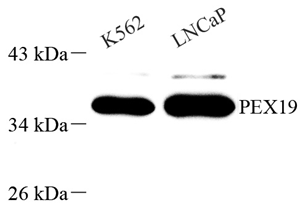Anti-PEX19 Rabbit pAb (100 μl)
| Reactivity: | H & H,M |
| Applications: | WB & IHC/IF |
| Host Species: | Rabbit |
| Clonality: | Polyclonal |
| Gene Name: | Peroxisomal biogenesis factor 19 |
Synonyms: | 33 kDa housekeeping protein, D1S2223E, HK33, Peroxin-19, PEX19, PMP1, PMPI, PXF, PXMP1, Peroxisomal farnesylated protein |
Immunogen: | KLH conjugated Synthetic peptide corresponding to Mouse PEX19 |
Uniprot ID: | Q8VCI5 |
Isotype: | IgG |
Purity: | Affinity purification |
Subcellular location: | Cytoplasm, Membrane, Peroxisome |
Predicted MW. / Observed MW. | 33 kDa / 35 kDa |
Product Usage Information
WB | Human | 1: 300-1: 500 | K562, LNcap |
IHC/IF | Human, Mouse | 1: 300-1: 800 | Kidney, tonsil, placenta |
Background
Peroxins (PEXs) are proteins that are essential for the assembly of functional peroxisomes. PEX19 gene is necessary for early peroxisomal biogenesis. It acts both as a cytosolic chaperone and as an import receptor for peroxisomal membrane proteins (PMPs) . PEX19 may bind newly synthesized PMPs and facilitate their insertion into the peroxisome membrane . The peroxisome biogenesis disorders (PBDs) are a group of genetically heterogeneous autosomal recessive, lethal diseases characterized by multiple defects in peroxisome function.
Images
| Western blot analysis of PEX19 (GB113836) at dilution of 1: 500 |
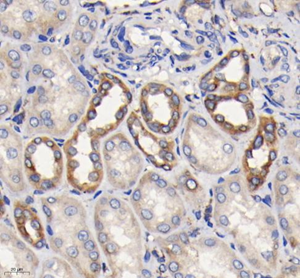 | Immunohistochemistry analysis of paraffin-embedded human kidney using PEX19 (GB113836) at dilution of 1: 800 |
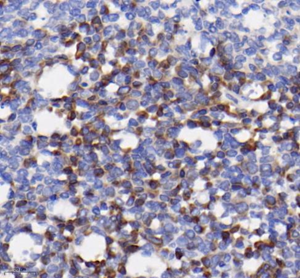 | Immunohistochemistry analysis of paraffin-embedded human tonsil using PEX19 (GB113836) at dilution of 1: 800 |
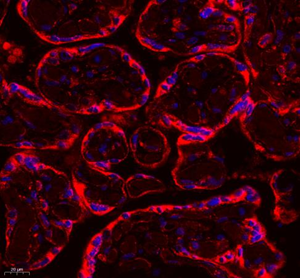 | Immunofluorescent analysis of paraformaldehyde-fixed human placenta using PEX19 (GB113836) at dilution of 1: 800 |
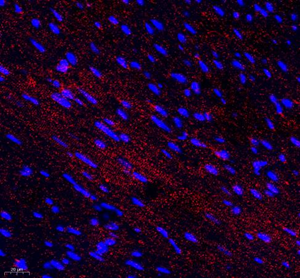 | Immunofluorescent analysis of paraformaldehyde-fixed mouse heart using PEX19 (GB113836) at dilution of 1: 800 |
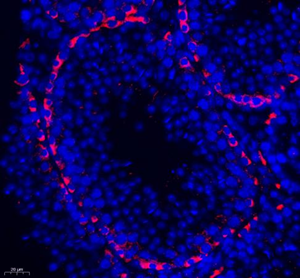 | Immunofluorescent analysis of paraformaldehyde-fixed mouse testis using PEX19 (GB113836) at dilution of 1: 800 |
Storage
| Storage | Store at -20°C for one year. Avoid repeated freeze/thaw cycles. |
| Storage Buffer | PBS with 0.02%sodium azide,100 μg/ml BSA and 50% glycerol. |

